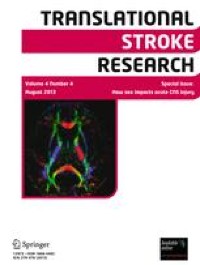Abstract
The intense inflammatory response triggered in the brain after focal cerebral ischemia is detrimental. Recently, we showed that the suppression of toll-like receptors (TLRs) 2 and 4 attenuates infarct size and reduces the expression of pro-inflammatory cytokines in the ischemic brain. In this study, we further examined the effect of unsuppressed induction of TLRs 2 and 4 on the expression of its downstream signaling molecules and pro-inflammatory cytokines 1 week after reperfusion. The primary purpose of this study was to investigate the effect of simultaneous knockdown of TLRs 2 and 4 on M1/M2 microglial polarization dynamics and post-stroke neurological deficits and the recovery. Transient focal cerebral ischemia was induced in young adult male Sprague-Dawley rats by the middle cerebral artery occlusion (MCAO) procedure using a monofilament suture. Appropriate cohorts of rats were treated with a nanoparticle formulation of TLR2shRNA and TLR4shRNA (T2sh+T4s h) expressing plasmids (1 mg/kg each of T2sh and T4sh) or scrambled sequence inserted vector (vehicle control) expressing plasmids (2 mg/kg) intravenously via tail vein immediately after reperfusion. Animals from various cohorts were euthanized during reperfusion, and the ischemic brain tissue was isolated and utilized for PCR followed by agarose gel electrophoresis, real-time PCR, immunoblot, and immunofluorescence analysis. Appropriate groups were subjected to a battery of standard neurological tests at regular intervals until 14 days after reperfusion. The increased expression of both TLRs 2 and 4 and their downstream signaling molecules including the pro-inflammatory cytokines was observed even at 1-week after reperfusion. T2sh+T4sh treatment immediately after reperfusion attenuated the post-ischemic inflammation, preserved the motor function, and promoted recovery of the sensory and motor functions. We conclude that the post-ischemic induction of TLRs 2 and 4 per sists for at least 7 days after reperfusion, contributes to the severity of acute inflammation, and impedes neurological recovery. Unlike previous studies in TLRs 2 or 4 knockout models, results of this study in a pharmacologically relevant preclinical rodent stroke model have translational significance.




Δεν υπάρχουν σχόλια:
Δημοσίευση σχολίου